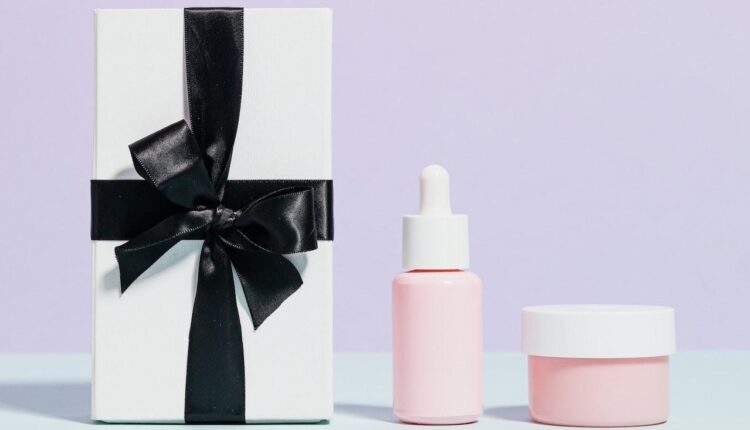Table of Contents
The cosmetic industry, once notorious for its love affair with luxury and opulence, has awakened to an urgent call — sustainability. Amidst mounting concerns over environmental pollution, especially from single-use plastics, the industry is searching for innovative alternatives to reduce its ecological footprint. From mushrooms to sawdust, the frontier of sustainable packaging is as dynamic as it is essential.
The Magic of Mycelium
Nature has always been a reservoir of inspiration, but using fungi for packaging material has elevated this inspiration to a groundbreaking level. Mycelium, the root-like structure of mushrooms, has come to the fore as an alternative to traditional styrofoam, especially for packaging delicate cosmetic products.
Mycelium’s natural properties make it an ideal candidate: it’s lightweight, shock-absorbent, and biodegradable. When cultivated under controlled conditions, it can be grown into custom shapes, offering flexibility to cater to diverse packaging needs. Moreover, post-use, mycelium-based packaging can decompose in a garden compost, turning back into organic matter without leaving harmful residues behind.
A Dissolution to Pollution: Packing Peanuts
Most of us remember the Styrofoam peanuts that once filled boxes, protecting the contents but leaving an environmental toll. The cosmetic industry’s pivot to dissolvable packing peanuts reflects the growing consciousness about sustainability. These innovative peanuts, typically made from cornstarch or other organic compounds, dissolve upon contact with water. So, instead of lingering in landfills for centuries, they vanish, illustrating a practical yet profound shift toward eco-friendliness.
PHA vs. PLA: A Shift in Bioplastics
The rise of bioplastics, particularly Polylactic Acid (PLA), promised a brighter, plastic-free future. However, while PLA is derived from renewable resources like corn starch or sugarcane, its decomposition requires specific industrial composting conditions, which aren’t always accessible.
Enter Polyhydroxyalkanoate (PHA). Harvested from bacterial fermentation, PHA offers a more environmentally friendly bioplastic alternative. It boasts a faster decomposition rate, even in marine environments, and doesn’t necessitate the stringent conditions that PLA does. While the production scale and costs associated with PHA remain challenges, its potential to redefine sustainable packaging is immense.
Biodegradable Composite Material
Among material innovations, Sulapac® stands out with its revolutionary approach to sustainable packaging. Crafted from renewable resources, Sulapac® material is both biodegradable and microplastic-free, merging the best of nature with human ingenuity. Its robustness, comparable to conventional plastics, combined with its environmental friendliness, makes it a favorite among eco-conscious brands.
Developed in Europe, the proper end-of-life pathway for this material is industrial composting. However, unlike other industrially compostable materials, Sulapac’s biocomposite containers will fully biodegrade without leaving microplastics behind (should they make it to the landfill or ocean) – and it happens in a reasonable timeframe, not 100 years.
Due to the paucity of biowaste management and industrial composting programs throughout North America, materials like those made by Sulapac® are often overlooked by brands. Dr. Heather Smith, a clean beauty brand founder and keen observer of cosmetic trends, ardently believes that Sulapac® can be a game-changer. She’s recently launched an exfoliating cleansing balm packaged in Sulapac® material and plans to expand her offerings soon. “Sulapac’s blend of innovation and eco-consciousness captures the essence of what sustainable cosmetics should aspire to be,” she remarks. “At this stage, costs are high and industrial composting infrastructure is lacking, but if brands don’t start taking the first steps, then nothing will ever change.”
Indeed, the initial steps are always the hardest. Adopting novel packaging materials might come with its share of hurdles — from higher costs to infrastructural limitations. Yet, it’s these very challenges that drive innovation and change. As more brands embrace materials like Sulapac®, the economies of scale will play their part, making sustainable options more accessible and affordable. Moreover, increased demand and visibility can catalyze the growth of supportive infrastructures like industrial composting facilities.
Change, especially on an industrial scale, is often a dance between supply and demand. Change-makers, like Dr. Smith, emphasize that waiting for the perfect moment or the ideal conditions might mean waiting forever. Instead, the industry needs to act now, making sustainability not just an optional extra but the core ethos.
The cosmetic industry stands at an exciting juncture. The convergence of innovation, environmental consciousness, and consumer demand provides a unique opportunity to redefine cosmetic packaging. From mushrooms to sawdust and everything in between, the solutions are out there. It’s up to the industry to embrace them, ensuring that beauty is not just skin deep but also kind to the planet.
See Also:


